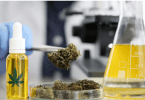What makes customer service feel so seamless? A lot happens behind the scenes that most people don’t notice. Whether it’s workflow software, scheduling maintenance, or internal dashboards tracking issues, these operational tools impact what the customer experiences. In 2025, businesses are realizing that invisible tech can be just as powerful as visible touchpoints.
Take cleaning management in hotels: software that logs room inspections, tasks, and staff schedules ensures guests walk into spotless rooms every time. That same attention to detail is moving into sectors like healthcare and retail, where backend systems ensure products are in stock and appointments are on time. The result is a more reliable service without customer stress.
This behind-the-scenes reliability forms the foundation for visible customer satisfaction. When tech keeps systems humming in the background, front-line staff can focus on moments that matter—like understanding needs, offering guidance, or delivering a friendly interaction. It’s a simple shift, but it supports lasting trust.
Let’s explore more on this below:
Contents
- 1 Leveraging Software for Smoother Operations
- 2 Bridging Physical and Digital Experiences
- 3 Linking Supply Chains to Customer Systems
- 4 Automating Surprise-and-Delight Moments
- 5 Real-Time Updates to Keep Customers Informed
- 6 Using AR/VR for Customer Visualization
- 7 Predictive Analytics to Anticipate Needs
Leveraging Software for Smoother Operations
Operational efficiency has become a key component of customer satisfaction. When internal processes run smoothly, customers may not see them, but they feel their effects in faster service and consistent quality. Companies across industries are investing in service-management platforms, CRM tools, and operational dashboards that bring clarity and speed to everyday tasks.
One area where this plays out clearly is in hospitality. Take cleaning software designed for hotels and resorts. Platforms like ResortCleaning, used by housekeeping teams to manage schedules, inspections, and service logs, help keep rooms ready and clean without fuss. This software reduces staff guesswork and also shortens guest wait times and improves room availability. When backend operations work well, customer-facing teams can focus on personalized service.
Bridging Physical and Digital Experiences
The line between physical and digital customer touchpoints has blurred, and businesses are integrating both to create smoother journeys. Whether you’re visiting a store, calling support, or browsing online, data shared across channels means you don’t have to repeat information or restart processes.
For example, retailers now merge in-store and online inventories. A customer can order online and pick up in person, or browse a product in-store using a digital kiosk for extra details. Hospitals and banks are offering similar experiences: patients can schedule appointments via an app and then check in on-site using digital kiosks, cutting down on wait times. This cohesive experience feels effortless to customers.
Linking Supply Chains to Customer Systems
Product availability profoundly impacts customer satisfaction. When businesses connect supply chains to customer-facing platforms, it results in more accurate stock information, faster restocks, and better delivery estimates. These linkages can turn potential friction points into smooth experiences.
E-commerce companies are already benefiting from these integrations. For example, linking warehouse software to online storefronts allows real-time updates, so customers aren’t met with “out of stock” messages after placing an order. In healthcare, clinics are tying their internal supply systems to patient scheduling tools, so that medical supplies are ready before treatments begin. Fewer errors and faster service raise customer trust and reduce anxiety.
Automating Surprise-and-Delight Moments
Customer loyalty often hinges on the unexpected, thoughtful gesture. Automation tools are now helping businesses plan and deliver these moments at scale. For instance, an AI-powered loyalty app might detect when a customer reaches a milestone, then trigger a personalized message or a small gift without any manual intervention.
Restaurants and hospitality groups are experimenting with automated greetings tailored to guest profiles, free upgrades, or anniversary freebies. Retailers use machine-learning tools to offer surprise coupons during checkout based on purchase history. Such little touches, delivered without staff having to track trends manually, make customers feel seen and appreciated.
Real-Time Updates to Keep Customers Informed
Customers today expect transparency at every step of their experience. Whether it’s a delivery, reservation, or repair service, receiving progress updates through text, email, or app notifications helps reduce anxiety and builds trust. Clear communication about timings, like order dispatch alerts or appointment reminders, keeps customers engaged and feeling in control.
In retail, logistics, and service industries, companies are using workflow automation tools integrated with notification systems. For example, clothing retailers send shipping updates and delivery windows, while tech support tickets update users when their issue moves to a technician. Prompt notifications prevent frustration and reinforce a sense of reliability.
Using AR/VR for Customer Visualization
The ability to visualize a product or service in your own space is quickly becoming a game-changer. Augmented reality (AR) apps let users virtually “place” furniture in their living rooms or preview makeup shades on their faces before purchase. Virtual reality (VR) showrooms offer immersive walkthroughs of hotels, venues, or even new car interiors.
This immersive technology dramatically reduces buyer uncertainty. When customers can see and interact with a product or environment virtually, they’re more likely to make confident decisions. Real estate agencies and home improvement brands are already piloting AR tools that let buyers envision renovations or property layouts even before stepping inside in person.
Predictive Analytics to Anticipate Needs
Forward-thinking companies are turning to predictive analytics to anticipate what customers will want before they even ask. Analyzing historical data like past purchase patterns, service calls, or browsing behaviors allows businesses to predict needs and recommend next steps proactively.
For instance, subscription services may automatically suggest product refills based on usage trends. Healthcare providers can send preventive care reminders customized to individual health histories. Even utility companies are using analytics to flag potential issues and offer maintenance before a problem arises. Anticipating customer needs this way creates a smooth, friction-free experience and positions brands as proactive partners.
The most successful companies are those that prioritize seamless experiences, linking operations with digital touchpoints, offering real-time updates, and surprising customers when it matters most. From leveraging CRM and housekeeping platforms to offering immersive AR previews and proactive analytics, businesses are reworking their strategies to meet modern expectations. Companies that skillfully combine automation, personalization, and human touch are the ones most likely to build loyalty and thrive in a competitive service environment.







